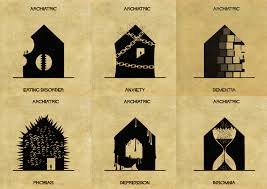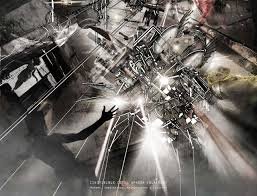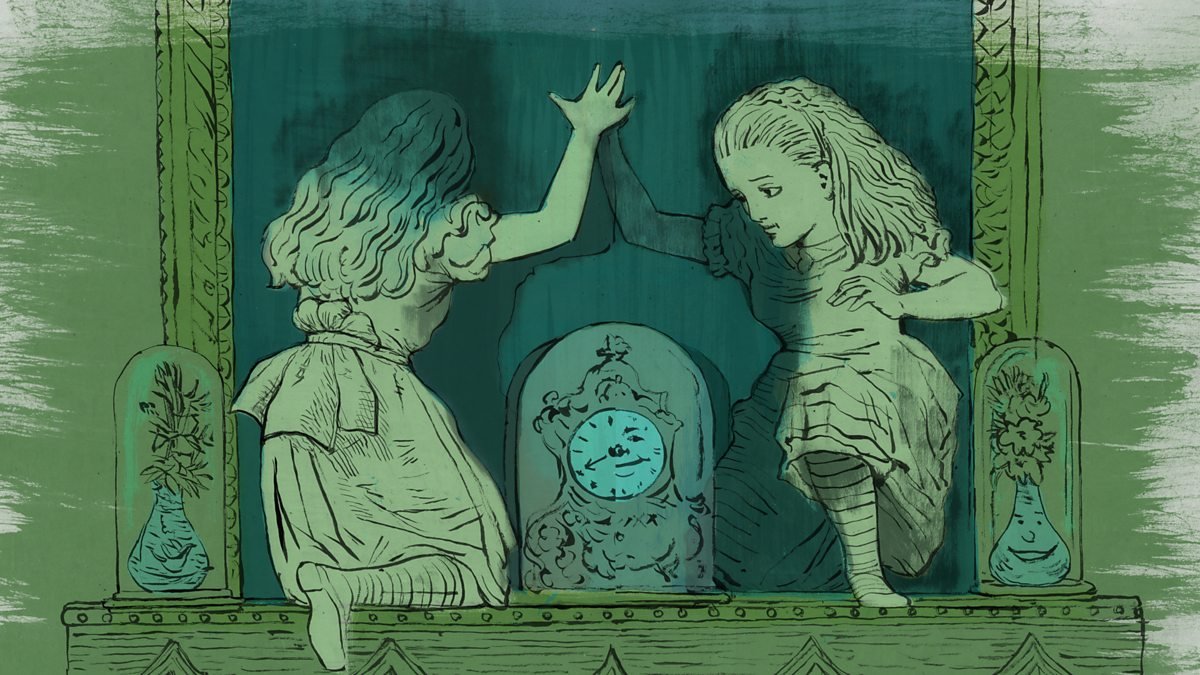There are minds that do not merely suffer — they split.
Not into madness, but into multiplicity — into too many selves observing the same world from incompatible angles. Schizophrenia is not only a disease of perception; it is a disturbance in ontology, a fracture in the contract between consciousness and reality. The schizophrenic does not lose touch with the world — the world loses coherence in their touch.
In ordinary consciousness, the self acts as a lens through which the world is held together: sensations, thoughts, and emotions converge into one continuous perspective. In schizophrenia, this lens cracks. What was once seamless becomes plural. Thought detaches from thinker, perception detaches from presence. The individual becomes witness to their own mind, hearing it speak in foreign voices. The ego, once the silent conductor of experience, becomes one of the instruments — out of tune, out of order.
Neuroscience describes this as a dysregulation of dopamine, a disruption in predictive coding — the brain’s failure to distinguish between internally generated and externally caused stimuli. But this explanation touches only the surface. Beneath the neurochemistry lies something more profound: a crisis in the structure of meaning itself. Schizophrenia reveals the fragility of the boundary that keeps thought private, emotion internal, and the world external. When that boundary dissolves, reality becomes porous — everything speaks, everything connects. The mind perceives infinite pattern where others see randomness. It is not delusion in the simple sense; it is over-meaning, the unbearable saturation of significance.
To the schizophrenic, the universe is not silent — it whispers through signs, coincidences, numbers, fragments. Every event becomes message; every gaze, a code. This hyper-symbolic perception, while terrifying, is also profoundly poetic. It is the collapse of ordinary distance between mind and cosmos. The self no longer lives in the world — it is the world, mirrored endlessly through hallucination. Madness, in this light, is not emptiness but overflow.
Psychiatry has long struggled with this paradox. How can one heal a consciousness whose illness is the very way it constructs reality? Antipsychotics calm the storm, dampen dopamine, re-stabilize pattern recognition. Yet what they often silence is not only suffering but a strange form of metaphysical creativity — the mind’s attempt to reassemble a fragmented universe. Many patients describe medication not as cure but as narrowing — a return to the smaller world everyone else calls normal. To them, normality can feel like exile from a larger, though dangerous, dimension.
From a phenomenological view, schizophrenia is not merely the breakdown of cognition but the expansion of ontological permeability. The barriers between thought and world, subject and object, dissolve. Heidegger called this “unconcealment without control” — the raw exposure of Being without the filter of selfhood. The schizophrenic does not interpret reality incorrectly; they experience too much of it, all at once, without hierarchy. They are like a radio receiving every frequency simultaneously, unable to tune out the noise of existence. The tragedy lies not in their distance from reality, but in their unbearable intimacy with it.
Culturally, schizophrenia is the mirror of modernity. In a society where identity is fragmented, communication overloaded, and meaning unstable, the schizophrenic mind embodies the collective condition in extreme form. We live in an era of hallucinated realities — digital selves, algorithmic voices, invisible surveillance. The boundaries of the self dissolve daily into virtuality. Perhaps schizophrenia is not an exception but a revelation — the psyche’s prophetic reflection of what humanity is becoming.
Yet within the depths of this fracture, there is something sacred. Many who have survived psychosis describe moments of terrifying beauty — an experience of cosmic unity, an ecstatic fusion of mind and universe. What psychiatry labels delusion can, in certain contexts, resemble mystical vision. The difference lies not in content but in containment. The mystic returns from the vision; the psychotic drowns in it. One integrates the infinite; the other is consumed by it. Both, however, touch the same ocean of consciousness.
Therapeutically, true care requires more than suppression. The psychiatrist must stand as both scientist and witness, holding the patient between chaos and coherence. The goal is not to erase the visionary world but to help the patient anchor within it — to translate infinite significance into manageable meaning. Psychotherapy becomes the art of re-threading narrative, rebuilding the fragile membrane that allows a self to exist amid infinity.
Neuroscience, meanwhile, is beginning to glimpse the biological mirror of this process. Research into cortical connectivity suggests that psychosis involves excessive synchrony — networks that should oscillate separately become entrained, producing cross-talk between imagination and perception. The brain loses its modularity; dreams leak into waking life. In this sense, schizophrenia may represent consciousness turned inward too far — the dream factory overriding the sensory gate. Treatment, then, is not merely pharmacological correction but the re-establishment of rhythmic distinction between world and self.
And yet, to speak of schizophrenia only as dysfunction misses its existential significance. It reveals something essential about being human: that reality itself depends on a fragile act of trust. We believe our thoughts are our own, our senses reliable, our world shared. Schizophrenia exposes this faith as a construction — delicate, provisional, and astonishingly brave. Those who fall through its cracks show us the invisible scaffolding of sanity.
Perhaps one day, psychiatry will no longer see schizophrenia solely as pathology, but as a radical form of consciousness — a painful experiment in what it means to exist without walls. Such a view does not romanticize suffering; it recognizes the depth from which it arises. The schizophrenic is not lost outside reality but submerged within it, trapped in a flood of meanings the rest of us have learned to ignore. Healing, therefore, means learning to navigate infinity without drowning.
At the far end of recovery, some patients describe an unexpected peace — not the return to who they were, but the acceptance of what they have become: witnesses to the porousness of reality. They move carefully through the world, aware that every object might speak, every silence might echo. Their fragility is their wisdom. They have touched the instability that underlies all perception and returned to tell us: sanity is not the absence of madness, but the art of balance upon its edge.
Schizophrenia, then, is the mirror in which humanity glimpses its own fractured image — the cost of consciousness, the price of seeing too much. To understand it is not merely to cure, but to listen: to the voices, the symbols, the dreams that rise from the depth where self and world dissolve into one. For in that dissolution lies both the terror and the truth of being.






